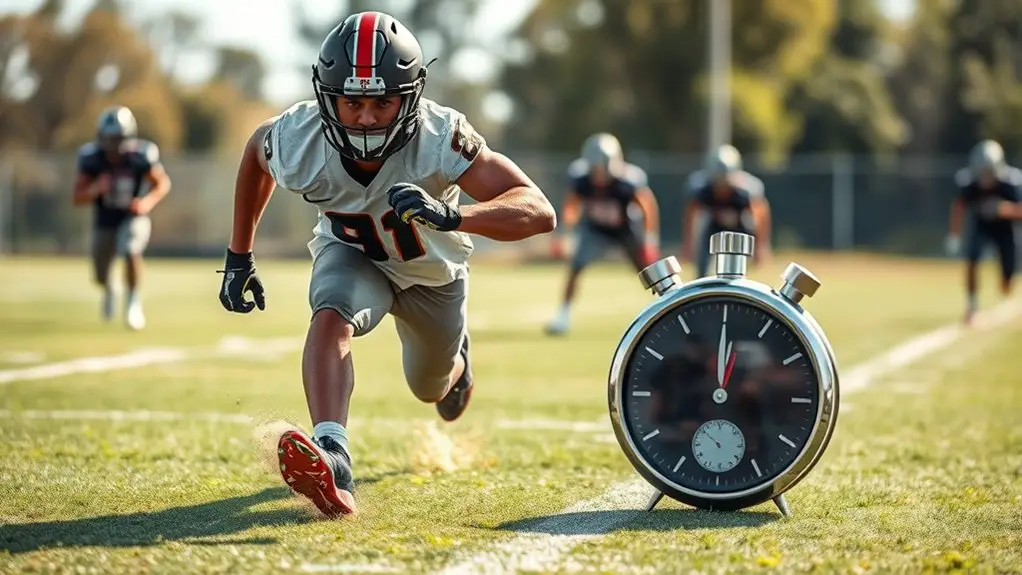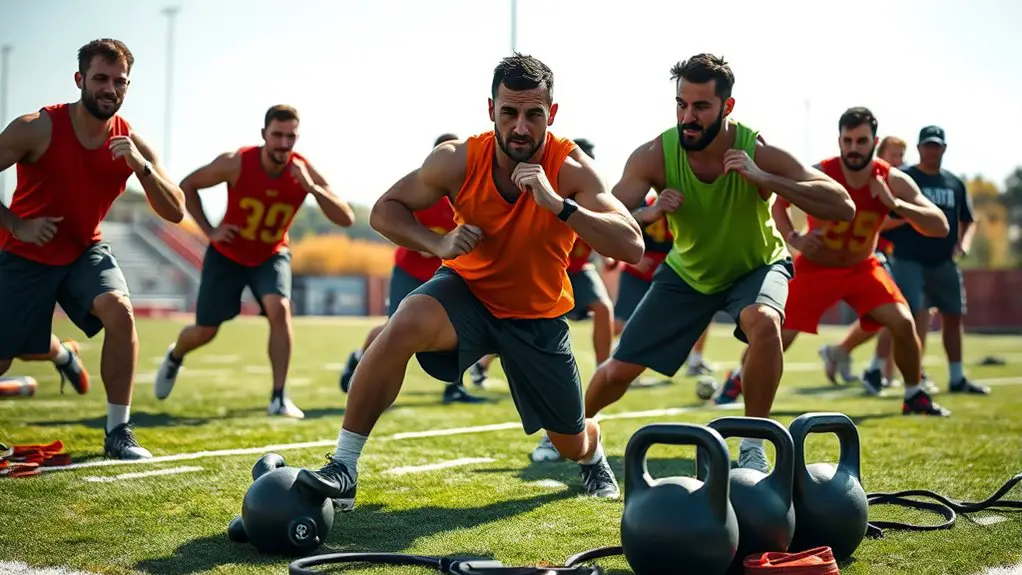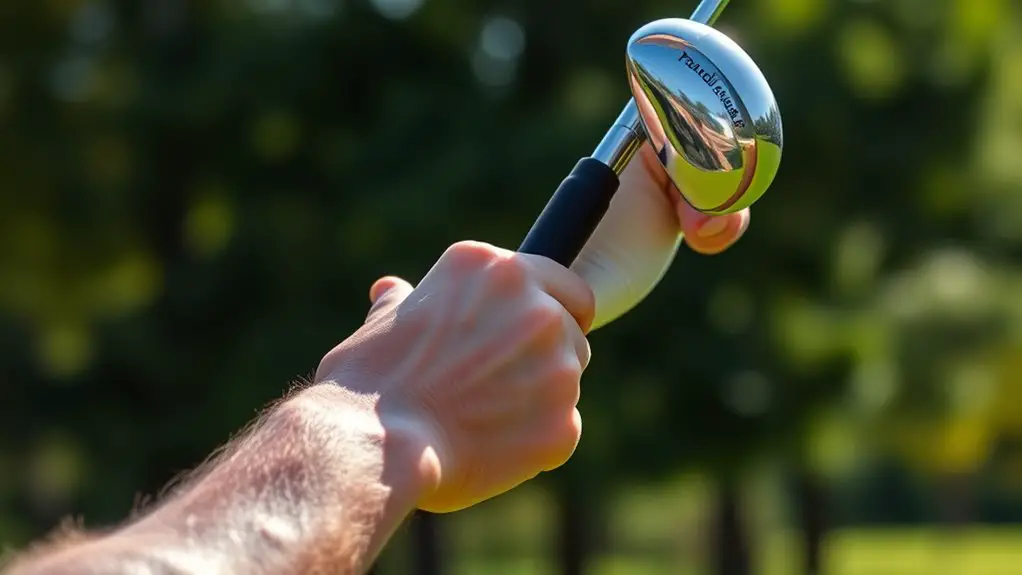To develop a stronger pull phase for more speed, focus on key muscles like your lats, trapezius, and core. Incorporate effective drills such as banded pull-ups and explosive jump pulls into your routine. Avoid common mistakes like failing to engage your core or neglecting breath control. Regularly assess your strength and be ready to adjust your training plan as needed. Keep at it, and you'll discover more techniques to enhance your performance.
Understanding the Pull Phase: What It Is and Why It Matters
The pull phase is an integral component of various strength training and athletic movements, impacting your overall performance. Understanding the pull phase fundamentals can reveal your potential and help you soar to new heights. During this phase, it's vital to maintain proper alignment. When your body's aligned, you'll generate more power and reduce the risk of injury, allowing for greater freedom in your movements.
Think about how you approach each lift or sprint; your body's positioning can make or break your success. With a keen focus on alignment, you'll find that your effectiveness increases, and those hard-earned gains come more easily. Embrace the pull phase as a dynamic element of your training routine, and you'll not only improve your strength but also enhance your athleticism. This understanding paves the way for greater freedom in your performance, encouraging you to push boundaries and explore your true capabilities. Additionally, incorporating exercises like squats and deadlifts can significantly enhance your pull phase performance by building essential strength and stability.
Key Muscles Involved in the Pull Phase
Understanding the key muscles involved in the pull phase is essential for maximizing your performance. The latissimus dorsi, often referred to as your lats, plays a significant role in generating power during this phase. Engaging these muscles helps you pull with strength and efficiency, allowing for greater speed.
Don't underestimate the trapezius involvement, either. This muscle stabilizes your shoulder blades and provides support to your upper back, ensuring a smooth and controlled pull.
Bicep engagement is important as well; these muscles assist in flexing your arms, which is critical for an effective pull. Finally, core stability can't be ignored. A strong core acts as a foundation, transmitting force from your legs through your upper body. By focusing on these muscle groups, you'll create a more powerful pull phase, enhancing your overall speed and performance. Embrace the freedom that comes with a stronger, more efficient pull! Additionally, developing core strength will enhance your ability to maintain stability during the pull phase, further improving your performance.
Effective Drills to Strengthen Your Pull Phase
Incorporating targeted drills can considerably enhance your pull phase, leading to improved performance. Start by practicing drill variations like the banded pull-up or the explosive jump pull. These drills not only build strength but also promote the explosive power needed for a stronger pull phase.
Focus on timing strategies as you execute these drills. Make sure your movements are fluid and coordinated; this will help you develop muscle memory and improve your rhythm. Try breaking down the pull phase into segments, emphasizing each part with specific drills.
For example, practice the initial pull with resistance bands and then shift into a full movement. This approach will help you connect the dots between strength and speed. Remember, consistency is key; regularly incorporating these drills into your routine will lead to noticeable improvements in your pull phase, giving you the freedom to perform at your best. Additionally, integrating plyometric exercises into your training can enhance your explosive movements, further contributing to your overall speed and agility.
Incorporating Resistance Training for Enhanced Performance
To further enhance your pull phase, integrating resistance training into your regimen can make a significant difference. Using resistance bands is a fantastic way to build strength endurance, which will ultimately translate to improved speed. By incorporating resistance training, you'll not only increase your muscle power but also develop the explosive strength needed for a powerful pull phase. Additionally, resistance band training promotes proper movement patterns, which is crucial for preventing injuries and enhancing overall performance.
Here's a simple table to guide your resistance training routine:
| Exercise | Resistance Tool | Duration/Reps |
|---|---|---|
| Band Pull Apart | Resistance Bands | 3 sets of 15 reps |
| Seated Row | Resistance Bands | 3 sets of 10 reps |
| Overhead Press | Resistance Bands | 3 sets of 12 reps |
| Lateral Raises | Resistance Bands | 3 sets of 12 reps |
Embrace the freedom to explore various resistance exercises; they'll elevate your performance and help you reach new heights in your pull phase!
The Role of Flexibility and Mobility in the Pull Phase
While you may focus on strength training to enhance your pull phase, don't overlook the importance of flexibility and mobility. These elements are key to maximizing your performance and preventing injuries. Here are some flexibility benefits and mobility exercises that can help you achieve a stronger pull phase:
- Improved range of motion for fluid movement
- Enhanced muscle elasticity, promoting better power output
- Better body awareness, aiding in technique refinement
- Reduced risk of injury through balanced muscle engagement
- Quicker recovery times, allowing for more consistent training
Incorporating these mobility exercises into your routine will not only enhance your pull phase but also give you the freedom to explore different techniques. Stretching, dynamic warm-ups, and targeted mobility drills can make a significant difference in how you're able to accelerate and maintain speed. Embrace these practices, and you'll feel the positive impact on your overall performance. Additionally, prioritizing mobility training helps maintain joint health and improve body resilience, further contributing to your athletic success.
Analyzing Technique: Common Mistakes to Avoid
Although you may feel confident in your technique, common mistakes can undermine your pull phase effectiveness. One prevalent error is failing to engage your core, which can lead to instability and a weaker pull. Make sure you're bracing your core throughout the movement; this simple technique adjustment can greatly enhance your power output.
Another mistake is overextending your arms or relying too much on upper body strength. Focus on maintaining a strong, compact position to optimize efficiency. Additionally, neglecting your breathing can limit your performance. Remember, exhaling during the pull can help you maintain control and power.
Lastly, don't forget to check your grip. A loose grip often leads to poor control and timing. By addressing these common errors and making the necessary technique adjustments, you'll set yourself up for a stronger pull phase and greater speed. Embrace these changes, and feel the freedom in your movement! Additionally, developing grip strength can significantly improve your overall performance and stability during the pull phase.
Monitoring Progress and Adjusting Your Training Plan
Addressing common mistakes in your pull phase sets a solid foundation for improvement, but progress doesn't stop there. To truly enhance your performance, you need effective progress tracking and timely training adjustments. Here's how to keep your training fluid and responsive:
Improving your pull phase requires ongoing progress tracking and adaptable training strategies for optimal performance.
- Set measurable goals: Define specific benchmarks for your pull phase.
- Use a training log: Document your sessions, noting what works and what doesn't.
- Monitor your strength: Regularly assess your pull strength with targeted exercises.
- Adjust your plan: Don't hesitate to modify your workouts based on your performance data.
- Listen to your body: Pay attention to fatigue and recovery to avoid burnout. Additionally, consider incorporating pre-workout nutrition into your routine to maximize your performance.
Frequently Asked Questions
How Often Should I Practice My Pull Phase Training?
Imagine gliding through water, each stroke powerful and fluid. To enhance your pull phase frequency, aim for 2-3 sessions a week. This rhythm keeps your training schedule balanced, allowing for recovery while still pushing your limits. You'll feel the freedom in your movements as you practice consistently, fine-tuning your technique. Embrace the journey, and soon you'll notice the strength in your pull phase blossoming, propelling you forward with ease.
Can Nutrition Impact My Pull Phase Performance?
Absolutely, nutrition can greatly impact your pull phase performance. By focusing on nutrient timing, you can fuel your body effectively before and after training sessions. Don't forget about hydration strategies, as staying properly hydrated helps maintain your energy levels and overall performance. When your body's well-fueled and hydrated, you'll feel that freedom to push yourself harder, ultimately enhancing your pull phase and achieving your goals more efficiently.
What Gear or Equipment Do I Need for Pull Phase Training?
Training for your pull phase is like tuning a high-performance engine; you need the right gear to maximize your speed. You'll want resistance bands for added tension, a pull-up bar to build strength, and a speed harness to enhance your explosiveness. A weight vest can give you that extra challenge, while training gloves guarantee grip and comfort. Equip yourself wisely, and you'll feel the freedom to soar through your workouts!
How Long Does It Take to See Improvements in My Pull Phase?
When you're wondering about your pull phase timeline, it really depends on your starting point and consistency. Generally, you might start noticing improvement benchmarks within a few weeks of focused training. If you stay committed and adjust your techniques, the gains can accelerate. Remember, everyone's journey is different, so celebrate your progress along the way. Embrace the freedom to train at your own pace, and enjoy the process of getting stronger!
Should I Focus on Endurance or Strength for the Pull Phase?
When you're weighing your options, it's tempting to chase both endurance and strength training, each offering its own charm. If you're looking for a solid pull phase, focus on strength training first; it'll build the foundation you need. Once you've got that power, sprinkle in some endurance training to keep your stamina high. Balancing these elements lets you enjoy the freedom of movement while maximizing your potential for speed and efficiency.




